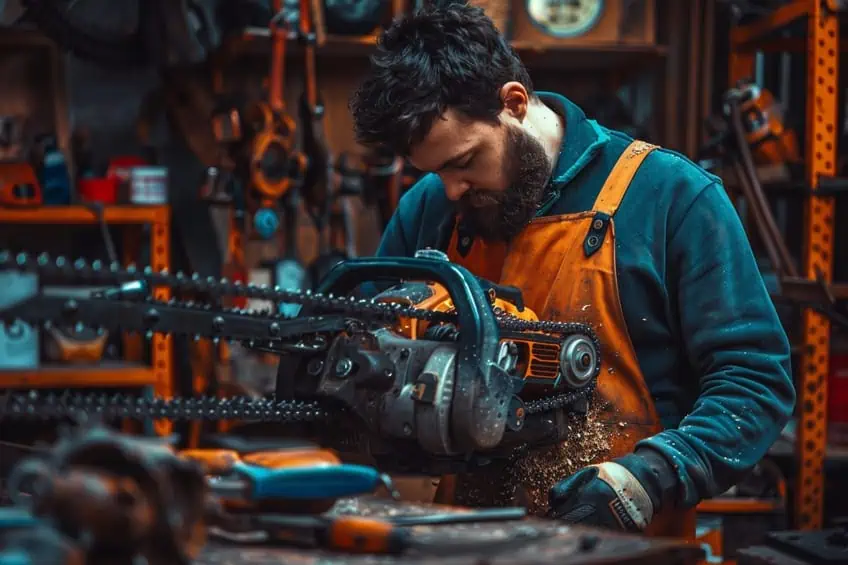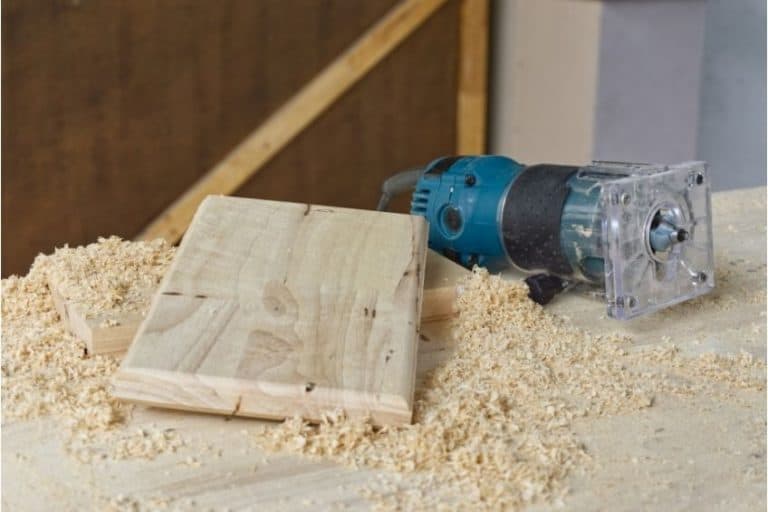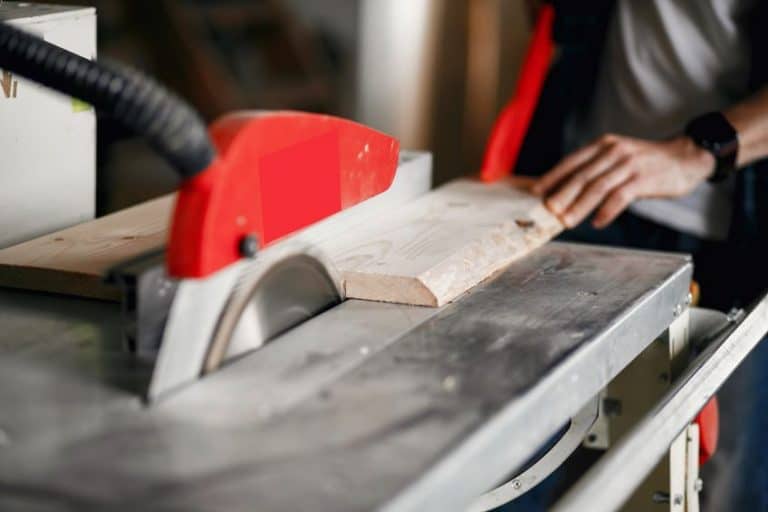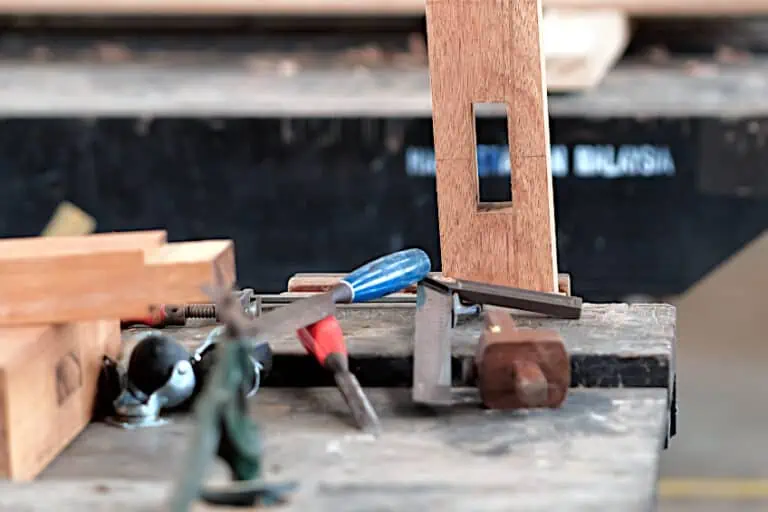How to Port a Chainsaw – Fine-Tuning Power
Are you ready to rev up your chainsaw skills? In this DIY adventure, we’re diving into the world of porting chainsaws! Whether you’re a seasoned lumberjack looking to fine-tune your trusty tool or a DIY enthusiast eager to unleash more power from your equipment, porting your chainsaw can take your cutting game to the next level. Get ready to learn the ins and outs of this exciting modification and discover how to turn your chainsaw into a roaring powerhouse!
Table of Contents
Key Takeaways
- Porting a chainsaw improves engine efficiency and power.
- A precise process, porting requires specific tools and understanding of chainsaw mechanics.
- It maintains chainsaw functionality and enhances performance when done correctly.
What Does Porting Entail?
Porting a chainsaw is a meticulous process that involves modifying a chainsaw’s engine to improve its efficiency and power output. This procedure enhances the engine’s ability to breathe by enlarging and reshaping the intake and exhaust ports, which allows for a greater flow of air and fuel mixture into the combustion chamber. Properly done, porting can lead to increased power gain and a more efficient cutting experience, making the task of cutting through wood less labor-intensive and more effective.
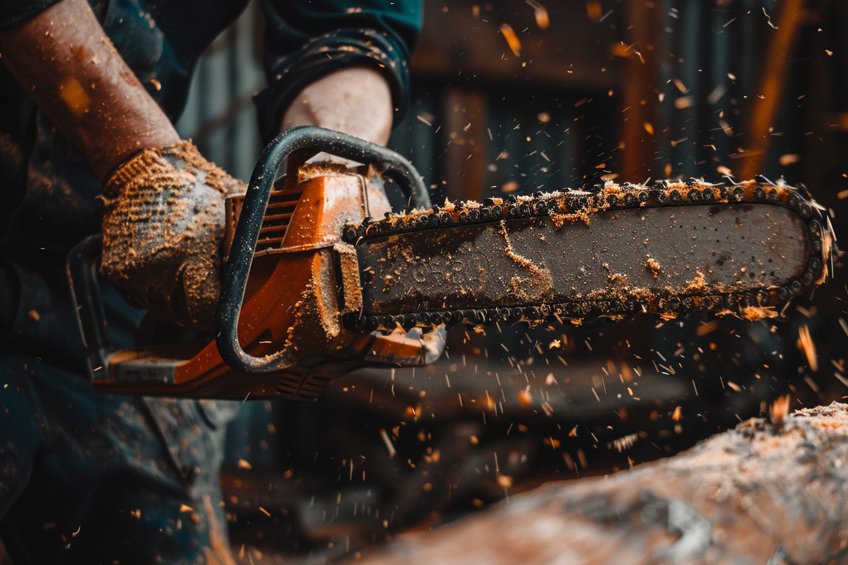
Safety is paramount in this endeavor as it requires the use of precision tools and an in-depth understanding of chainsaw mechanics. The steps in porting range from opening up the exhaust to adjusting the carburetor settings. It is a task that not only demands skill but also a responsible approach to maintain the chainsaw’s functionality over time. For those seeking to optimize their chainsaw’s performance, porting can be a rewarding project, provided they are equipped with the correct tools and knowledge. Key steps in porting include:
- Exhaust widening: The exhaust port is enlarged to allow for a more significant expulsion of exhaust gases. By doing so, it reduces the engine’s backpressure and increases RPMs.
- Intake tuning: Similarly, the intake port may be reshaped to optimize the flow of air and fuel into the engine for combustion.
- Cylinder work: The cylinder’s shape may be changed to complement the timing and flow enhancements made by adjusting the ports.
Modifications also include:
- Timing adjustments: Fine-tuning the timing of the engine’s port allows for better control of gas flow.
- Hardware replacements: Components such as the carburetor might be replaced with high-performance alternatives to match the increased airflow.
It is crucial that a person has sufficient knowledge and experience with engines before attempting porting, as improper modifications can reduce engine life or cause immediate damage. Porting should be done with precision tools, and after modification, the chainsaw requires proper tuning to ensure optimal performance.
Equipment and Safety
Before one begins the process of chainsaw porting, it is crucial to assemble the right tools and materials and adhere to stringent safety precautions to ensure a smooth and harm-free operation.
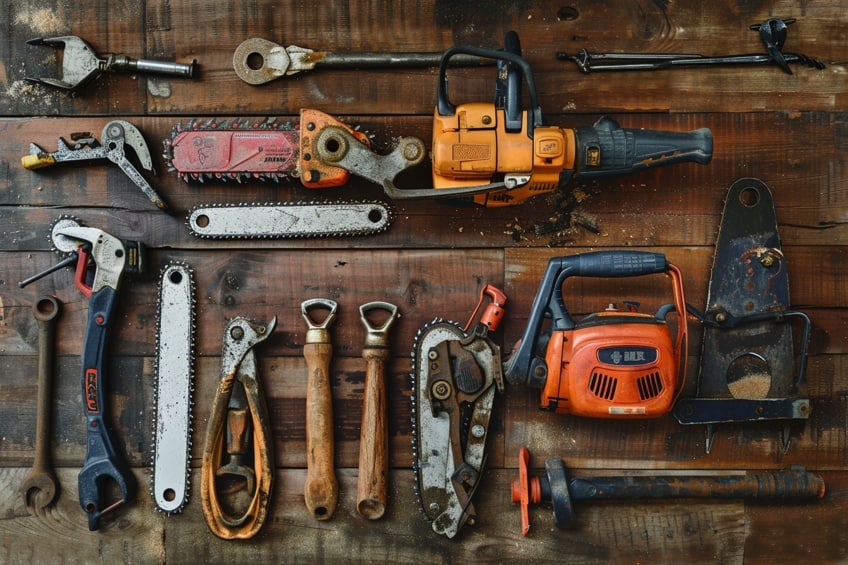
Required Tools and Materials
For chainsaw porting, one will need a selection of tools and materials that aid in disassembling and modifying the chainsaw’s engine:
- Screwdriver and wrench: To unscrew the chainsaw’s parts.
- Rag: For cleaning oil from the engine parts during disassembly.
- Grinder, drill, or dremel: Used for enlarging and reshaping the exhaust and intake ports on the chainsaw.
- Rotary tool: Helpful in precise grinding and finishing of the ports.
- Air compressor: For blowing out debris from the chainsaw during the porting process.
It’s important that each tool is in good condition and suitable for the specific task at hand.
Safety Precautions
When porting a chainsaw, safety cannot be overemphasized:
- Protective gloves: Always wear heavy-duty gloves to protect hands from sharp edges and debris.
- Safety glasses: Mandatory to shield eyes from flying particles and dust.
- Proper clothing: A long-sleeved shirt and pants to minimize skin exposure.
- Apron: A durable apron is recommended to protect one’s clothing and body from metal filings and other debris.
- No loose clothing: Ensure that all attire is snug to the body to prevent any material from getting caught in the chainsaw or the tools.
- Clean workspace: Maintain a tidy area, free of any unnecessary items that may obstruct the workspace.
Following these guidelines not only minimizes the risk of injury but also ensures a more efficient and successful porting undertaking.

Porting Process Steps
Porting a chainsaw is a precise and technical process, aimed at improving the performance by enhancing the airflow within the engine. This involves meticulous modification of the chainsaw’s ports, resulting in a more efficient combustion process and higher power output.
Disassembly and Cleaning
The first step is to disassemble the chainsaw, ensuring all components, particularly the cylinder and piston, are accessible. Removal should be methodical to avoid damage. Once disassembled, cleaning is critical. The cylinder and all parts related to the engine’s airflow should be cleared of debris and residue. Use a clean rag and appropriate cleaning agents to do so.
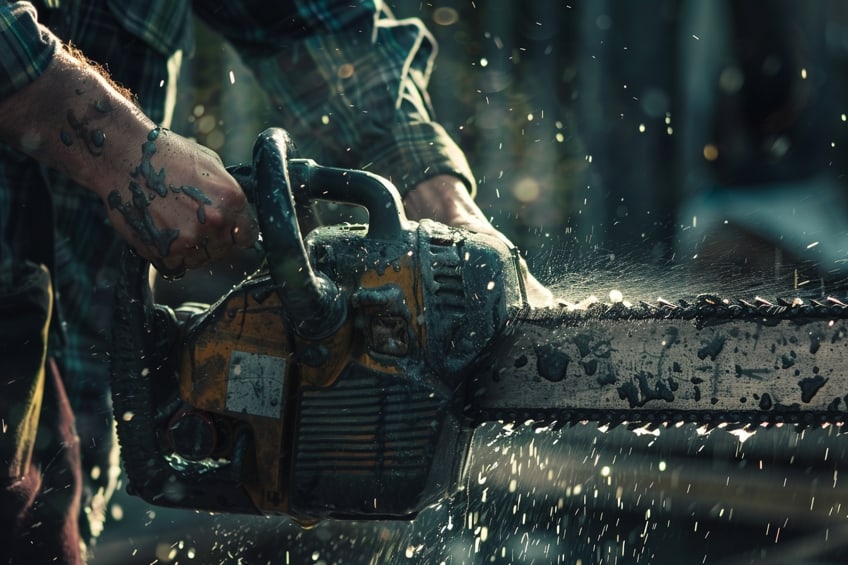
Modifications and Porting
Next, modifications are made to the intake and exhaust ports. Measuring tools like calipers are used to gauge the current size of the ports. Markings may be made with a marker pen as a guide for modifications. Adjustments may involve grinding to widen the ports, polishing to smooth rough edges and shaping for improved airflow dynamics. Metal files, sandpaper, and carbide burr tools are often used in this stage.
During this process, ensure that the modifications will promote efficient fuel and air mixture flow through the combustion chamber. This in turn enhances engine performance.
Assembly and Testing
After porting, all modified parts are meticulously reassembled using appropriate sealant gum for creating airtight connections. It is crucial to double-check the fit and alignments to avoid leaks or misplacements. Once the chainsaw is reassembled, testing follows. This consists of running the engine and observing improvements in performance and output. Safely conduct test cuts to ensure that the chainsaw operates as expected, noting any changes in power and efficiency.
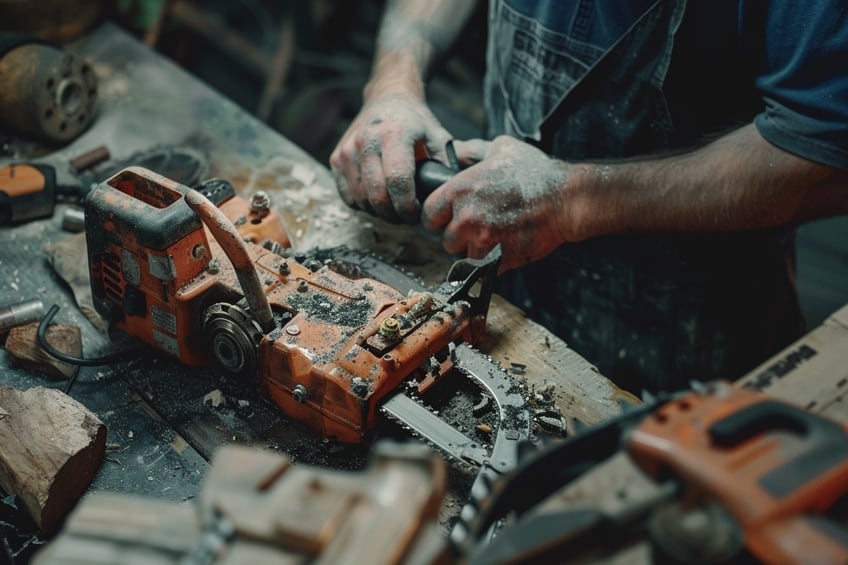
Tuning for Enhanced Performance
To harness the full potential of a ported chainsaw, fine-tuning the carburetor and adjusting mechanical timing and compression are crucial steps. These ensure optimal fuel flow and engine efficiency under increased power conditions.
Carburetor Adjustment
Carburetor tuning is essential after porting a chainsaw, as the modifications likely alter the air-to-fuel ratio. Adjusting the carburetor compensates for these changes and is critical to maintaining an ideal operating temperature and to prevent engine damage. One starts by locating the carburetor’s adjustment screws, typically marked as “H” (high speed), “L” (low speed), and “T” or “LA” (idle). Step-by-step carburetor tuning goes like this:
- Warm up the chainsaw by letting it run at a low speed for a few minutes.
- Turn the “L” screw clockwise to reach the point of highest idle speed, then turn it counterclockwise 1/4 turn.
- Adjust the “H” screw to achieve a smooth but not over-revved high speed without cutting under load.
- Set the “T”/”LA” screw to maintain a steady idle while ensuring the chain does not move on the bar.
Proper adjustment ensures the best blend of air and fuel, promoting efficient combustion and performance.
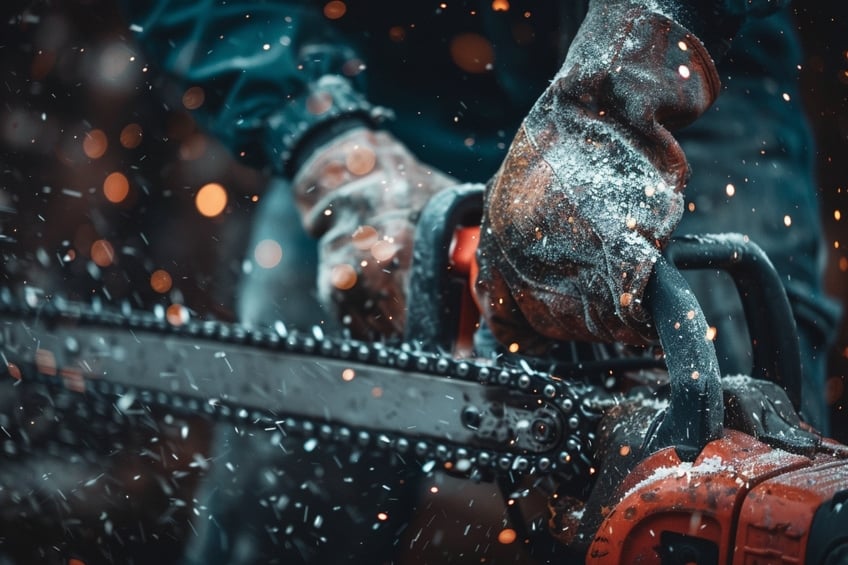
Timing and Compression
Mechanical timing focuses on the relationship between the piston and the spark plug’s firing to maximize the efficiency of the engine’s power stroke. Precise timing ensures that the spark plug ignites the fuel at just the right moment for optimal power. Compression factors include:
- Ensuring that the chainsaw maintains high compression is critical for the engine to run properly.
- Regular maintenance of the spark plug, checking for signs of wear, and replacing it if needed, contributes to maintaining proper combustion chamber pressure.
- After porting, a test should be conducted to ensure the compression ratio is within the manufacturer’s recommended range.
Adjusting mechanical timing and ensuring proper compression are technical tasks that often require professional tools and expertise to maintain the integrity of the engine’s internal dynamics.
Maintenance for Longevity
When maintaining a chainsaw for longevity, cleanliness and regular maintenance are vital. A well-maintained chainsaw ensures consistent power delivery and safe operation over its lifespan. Firstly, a chainsaw should be cleaned after each use. They must remove debris from the air filter, cooling fins, and all moving parts. This prevents build-up that can lead to overheating, which affects the operating temperature and ultimately the chainsaw’s condition. A chainsaw maintenance checklist should include the following:
- Air filter: Clean or replace to ensure proper airflow.
- Cooling fins: Remove debris to prevent overheating.
- Bar and chain: Check for wear and lubricate regularly for smooth operation.
- Spark plug: Clean and check the gap to maintain engine efficiency.
- Fuel system: Drain old fuel and clean the tank periodically to avoid residue build-up.
Proper lubrication significantly enhances the durability of the chainsaw’s moving parts. Users should regularly check and refill the bar and chain oil, ensuring that they remain at optimal working condition for peak performance. Maintenance intervals are crucial for longevity. They should inspect their chainsaw’s components and address any irregularities promptly.
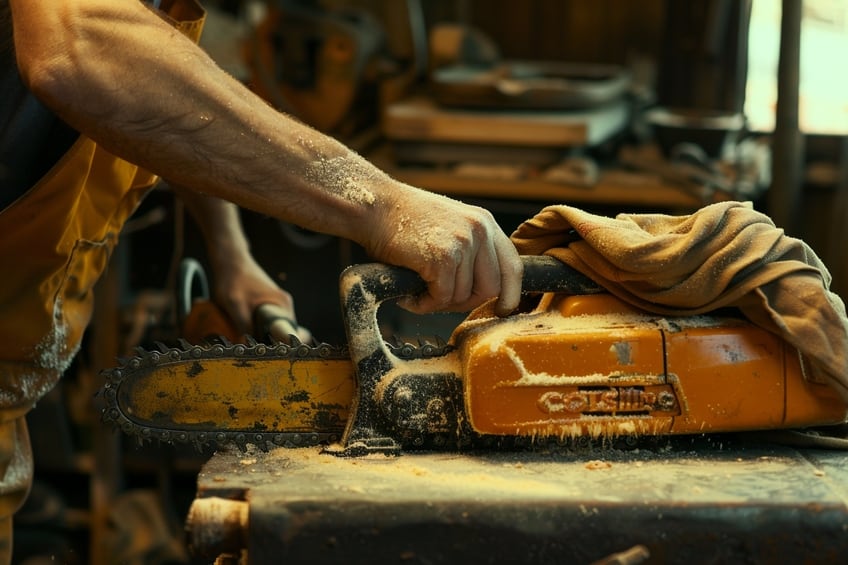
To conclude, a chainsaw’s longevity is closely tied to the user’s commitment to its maintenance. By following a structured maintenance schedule and addressing issues as they arise, the chainsaw will remain in excellent condition, delivering reliable power and performance for many years.
Congratulations, DIY champion! You’ve unlocked the secrets of porting your chainsaw like a pro. With your newfound knowledge and skills, you’re now equipped to tackle any cutting task with confidence and precision. Whether you’re sculpting logs into works of art or tackling hefty woodcutting projects, your ported chainsaw is your trusty sidekick. Remember, safety first, and happy sawing!
Frequently Asked Questions
What Tools Are Required for Porting a Chainsaw?
Porting a chainsaw requires precision tools such as a rotary tool with grinding and polishing attachments, a set of files, and possibly a piston ring compressor for reassembly. Safety equipment like goggles and gloves are also essential to protect one during the process.
What Are the Benefits of Porting a Chainsaw?
The primary benefits of porting a chainsaw include enhanced power output, increased torque, improved speed, and better fuel efficiency. These improvements come from optimizing the airflow through the intake and exhaust ports, which enables the engine to operate more effectively.
How Does Porting a Chainsaw’s Muffler Affect Its Performance?
Porting a chainsaw’s muffler can lead to a noticeable increase in power and exhaust flow. By creating a smoother path for the exhaust gases to exit, it reduces the back pressure on the engine, allowing for a more efficient cycle and resulting in improved engine performance.

I have been into woodworking since 2005 and woodturning since 2011. Because of my love for wood and woodworking, I started woodhappen.com to teach other enthusiasts about how to finish and seal wood, the best woodworking tools, the different types of wood, and everything else related to woodworking! Read more about me here.

